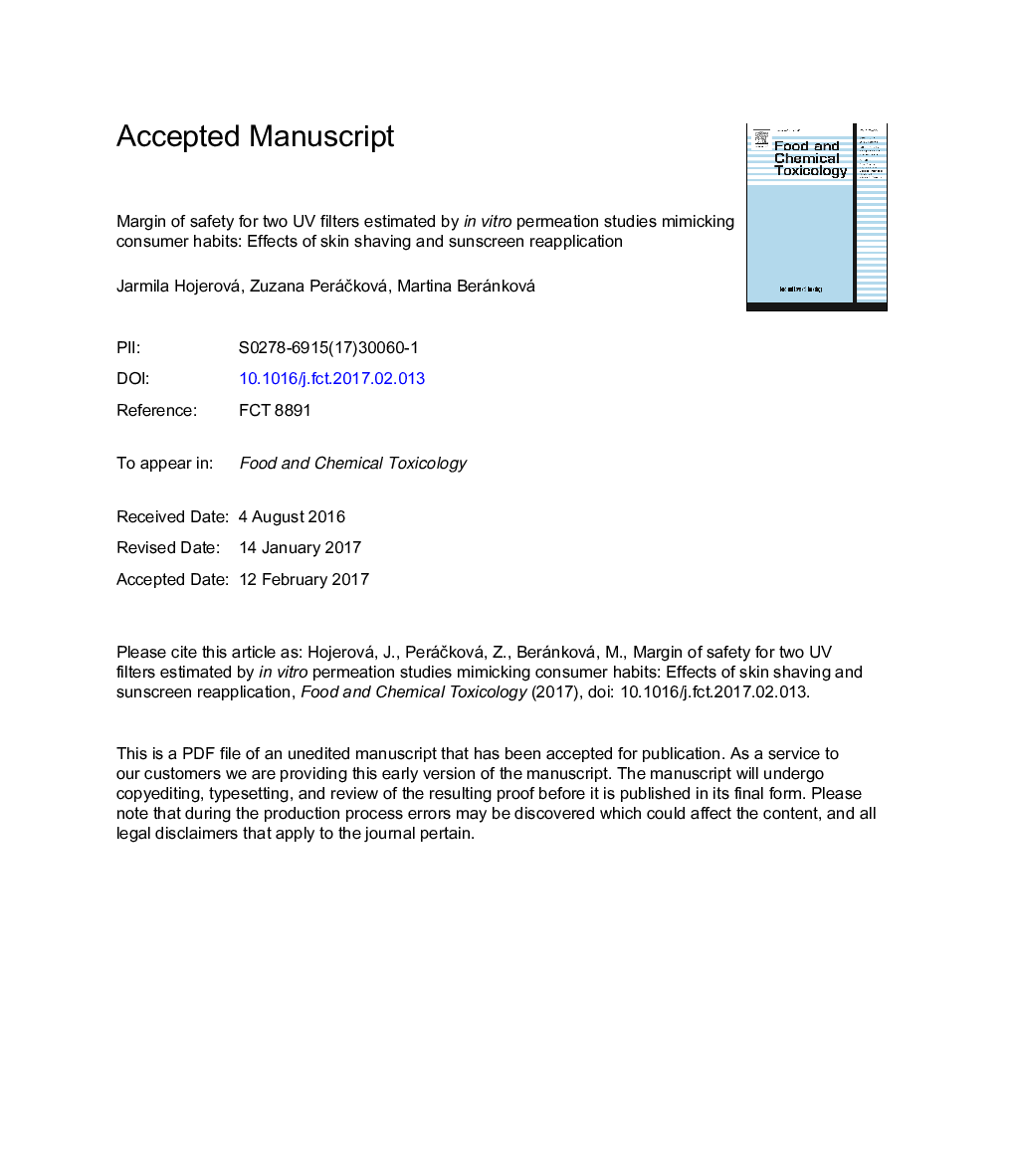| کد مقاله | کد نشریه | سال انتشار | مقاله انگلیسی | نسخه تمام متن |
|---|---|---|---|---|
| 5560221 | 1561742 | 2017 | 50 صفحه PDF | دانلود رایگان |
عنوان انگلیسی مقاله ISI
Margin of safety for two UV filters estimated by in vitro permeation studies mimicking consumer habits: Effects of skin shaving and sunscreen reapplication
دانلود مقاله + سفارش ترجمه
دانلود مقاله ISI انگلیسی
رایگان برای ایرانیان
کلمات کلیدی
PCPsnot assessedsystemic exposure dosereceptor fluidFull-thickness skinFDAPOWBP3ECHANOAELMOSSCCsEHTFTSOECDCIDUNDLOQEFSATECSPFASAW/O - W / Owater-in-oil - آب در روغنEuropean Chemicals Agency - آژانس مواد شیمیایی اروپاEuropean Food Safety Authority - اداره ایمنی اروپاU.S. Food and Drug Administration - اداره غذا و داروی ایالات متحدهHuman exposure assessment - ارزیابی انسانی انسانUltraviolet - اشعه فرابنفشBenzophenone-3 - بنزوفنون-3Margin of safety - حاشیه ایمنیDermis - درمیOrganisation for Economic Co-operation and Development - سازمان همکاری اقتصادی و توسعهSun protection factor - عامل حفاظت از خورشیدStratum corneum - لایه شاخی، استراتوم کورنئومlimit of quantification - محدودیت اندازه گیریNo observed adverse effect level - هیچ عوارض جانبی مشاهده نشدهsed - وEuropean Commission - کمیسیون اروپایی
موضوعات مرتبط
علوم زیستی و بیوفناوری
علوم کشاورزی و بیولوژیک
دانش تغذیه
پیش نمایش صفحه اول مقاله

چکیده انگلیسی
Sunscreens are intended to work on the skin. To be both efficient and safe, the lowest possible percutaneous permeation of UV filters should occur. The potential for systemic absorption of Benzophenone-3 (BP3, 10%) and Ethylhexyl Triazone (EHT, 5%) in a silicone-based water-in-oil emulsion was assessed in vitro using a full-thickness porcine-ear skin mimicking in-use conditions. The estimated Systemic Exposure Dose (SED) after the sunscreen application at 1.0 mg/cm2 for 6 h (i) on the face; (ii) on the whole-body skin, was (i) 136 and 30; (ii) 4200 and 933 μg/kg_bw/d for BP3 and EHT, respectively. Reapplication does not mean the double risk; the SED values were only 1.40-1.37-fold greater. Skin shaving increased BP3 and EHT bioavailability 1.38 and 1.80-fold, respectively. Margin of Safety values were estimated according to guidelines applicable for European Union. For three realistic exposure scenarios, MoS of 48, 34 and 34 for BP3 in the sunscreen applied on the whole-body indicate some concerns regarding the safety for consumers (MoS<100). Despite undeniable functional benefits in sunscreens, BP3 concentration allowed in EU cosmetics (max. 10%) should be reviewed, especially in products intended for whole-body applications. The development of new UV filters should be focused on their specific physico-chemical properties.
ناشر
Database: Elsevier - ScienceDirect (ساینس دایرکت)
Journal: Food and Chemical Toxicology - Volume 103, May 2017, Pages 66-78
Journal: Food and Chemical Toxicology - Volume 103, May 2017, Pages 66-78
نویسندگان
Jarmila Hojerová, Zuzana PeráÄková, Martina Beránková,